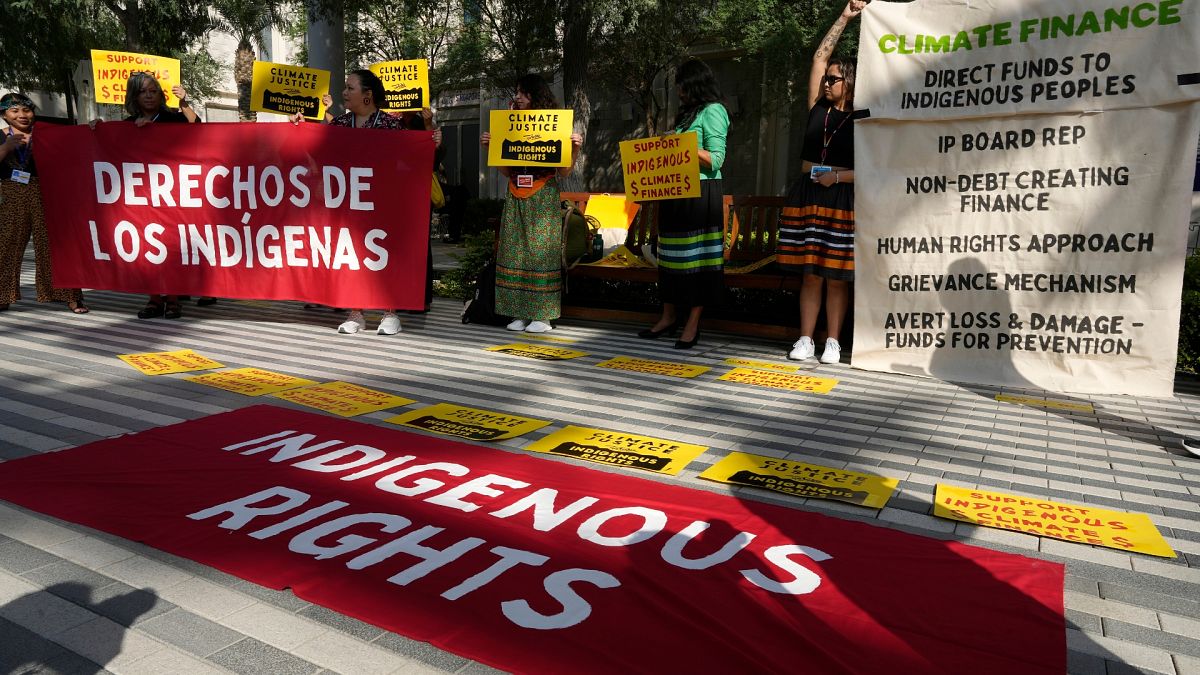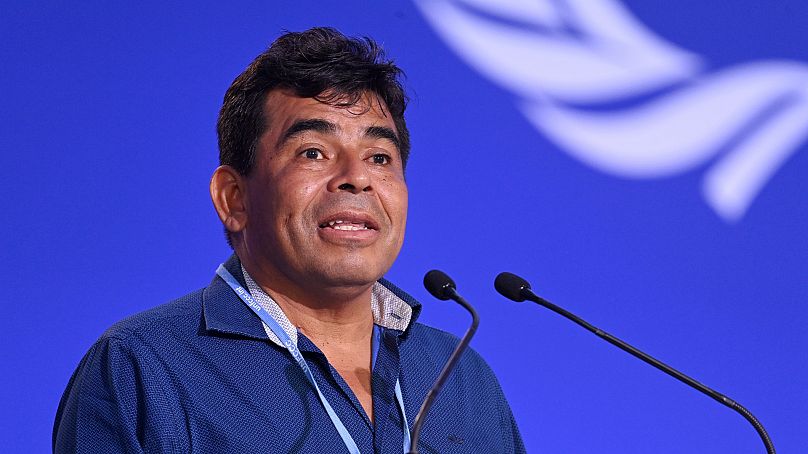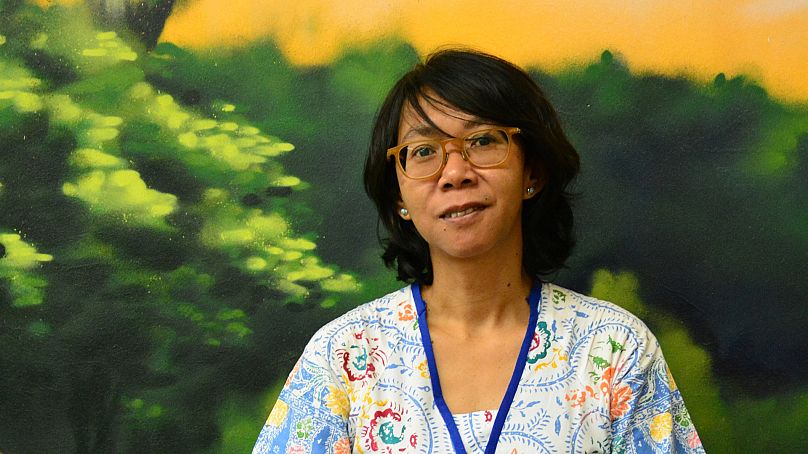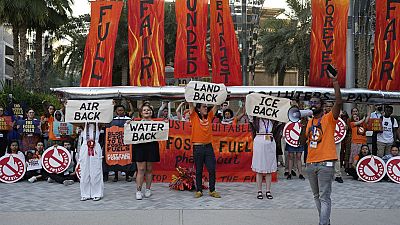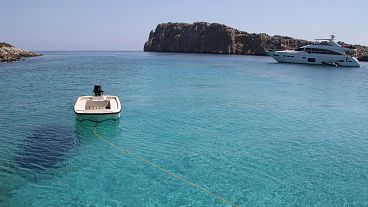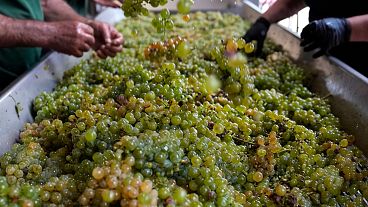Amid lofty climate finance pledges, Indigenous Peoples and local communities are fighting to be involved in decisions about their territories.
As delegates in Dubai debate how to invest trillions in climate finance, new evidence suggests that funds “evaporate” before reaching the communities that need them most.
At COP28, a global alliance of Indigenous Peoples and local communities has released a damning new report. It identifies significant flaws in global efforts to fund communities conserving some of the world’s most biodiverse and carbon-rich tropical forests in Africa, Asia and Latin America.
The research from the Global Alliance of Territorial Communities (GATC) finds that inadequate, antiquated systems for delivering funding - often through third parties - mean just a small fraction of this money is reaching Indigenous Peoples and local communities.
“We also know that less than 1 per cent of all climate finance trickles down to our communities, according to recent studies,” says Levi Sucre Romero, an Indigenous Bribri Costa Rican leader who serves on the GATC council and is the coordinator of the Mesoamerican Alliance of Peoples and Forests (AMPB).
“You would have to ask these intermediaries where all the money is going, and what it is being invested in. We would like to know that as well.”
Direct funding is essential for Indigenous communities
Romero represents communities from Panama to Mexico and explains that the pressure on their territories is “greater than ever”. It comes from both political and economic sources. There’s the expansion of industrial agriculture, of monocultures, of mining and fossil fuel extraction.
“We need help and additional resources to continue protecting them,” he says.
But help in the form of funding promised by international governments or private sources at global events like COP28 is not reaching these communities in the ways they should.
A second report released on Friday by the Forest Tenure Funders Group (FTFG) looks at a pledge to deliver $1.7 billion (€1.6 billion) in five years directly to Indigenous Peoples and local communities that was made in Glasgow at COP26.
In its first year, communities received 2.9 per cent of this money, the report says. In the second year, the money communities received dropped to 2.1 per cent.
GATC says this shows we are going backwards.
“In our experience, there are assumptions that IPs (Indigenous Peoples) organisations have no capacity to manage funds and are unable to carry out the programme, so it has to be handled by others,” says Mina Susana Setra, an Indigenous leader (Dayak Pompakng) from West Kalimantan, Indonesia.
She currently serves as the Deputy to Secretary General of the Indigenous People's Alliance of the Archipelago (AMAN) on Social Culture Affairs - the world's largest Indigenous organisation.
“This has been happening for years and has created a dependency that is not good for us,” she explains. When given the chance, Indigenous Peoples and local communities can manage the funds properly - but, Setra adds, they rarely get the chance to prove that.
There are already lots of initiatives in local communities, she says, and “with direct funding, we can upscale our work so it can have a greater impact.”
Direct access to finance is essential, Romero adds, because Indigenous Peoples and local communities informally manage large parts of the world’s last remaining tropical forests - essential to human survival on this planet.
Indigenous organisations are starting their own funding streams
It’s a longstanding call that has echoed across many UN climate conferences but it’s still one that international processes broadly seem to struggle with: involving the people and places you are making a decision about in the decision-making process.
GATC’s efforts to collect data for this report revealed that Indigenous Peoples and local communities are often excluded from discussions about funding for their own territories and organisations.
“The study that we put out today supports what we all know to be historically true,” Romero says.
“Indigenous Peoples and local communities must be included in conversations about investing in the protection of nature.”
Though many donors are committed to increasing support for local communities and Indigenous Peoples, they are still trying to figure out how to channel the funds to get to them. It's slow progress.
“We urgently need to turn things around, yet progress is painfully slow,” said Lord Goldsmith, who was Minister of the Foreign, Commonwealth and Development Office of the UK Government when he joined other high-profile donors in making the pledge in Glasgow.
"The money often appears to evaporate in complex transactions through numerous layers of multilateral institutions, raising concerns that too little is being done to support the quest of Indigenous Peoples and local communities for their land rights as a climate solution.”
Frustrated, many Indigenous organisations and local communities are now starting their own financing mechanisms.
“There is Nusantara Fund in Indonesia, FTM in Meso-America, Poodali in Brazil,” Sentra says.
“And at a global level, we established Shandia, a platform to connect all those different mechanisms.”
When you don’t include these communities in developing funding mechanisms, Romero adds, or recognise the role they play in protecting tropical forests, how international aid is delivered can never change.
“If we are going to build something we need to build it together,” Romero says.
“We must not continue to make the same mistakes - where people or organisations who have nothing to do with us, or who don’t understand our cultures or anything about our communities - are designing something or on our behalf.”
